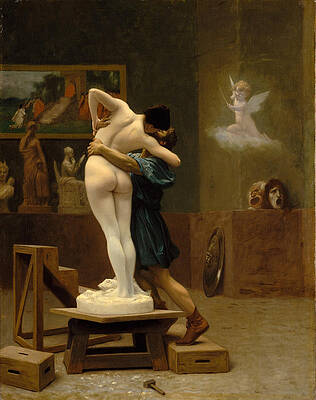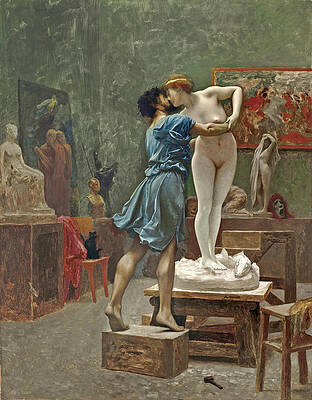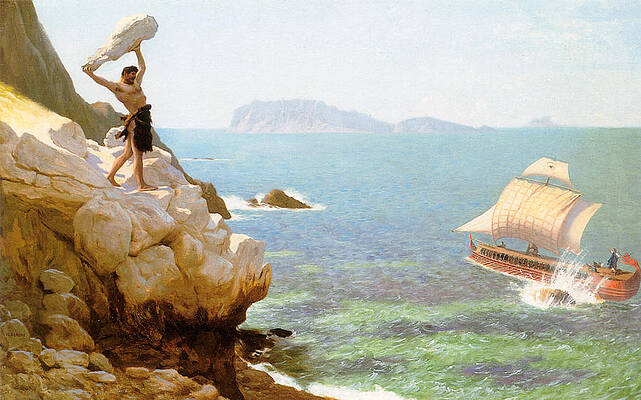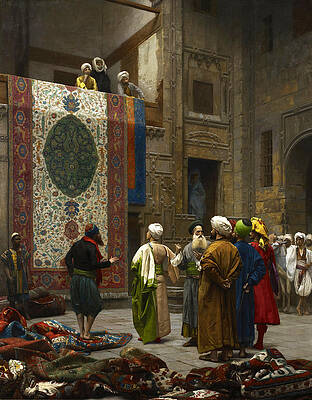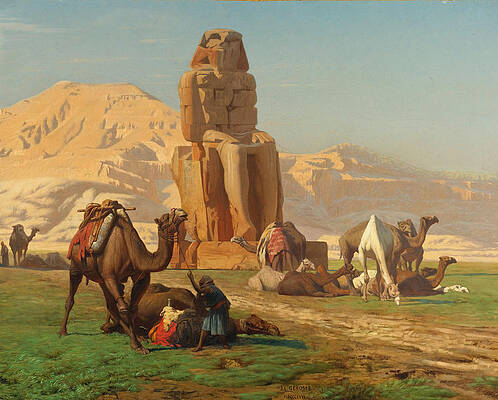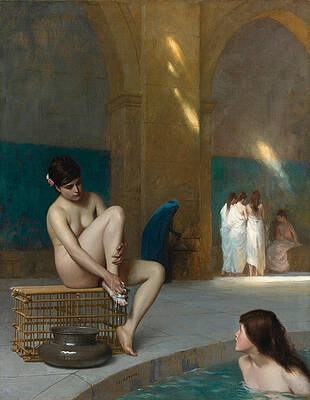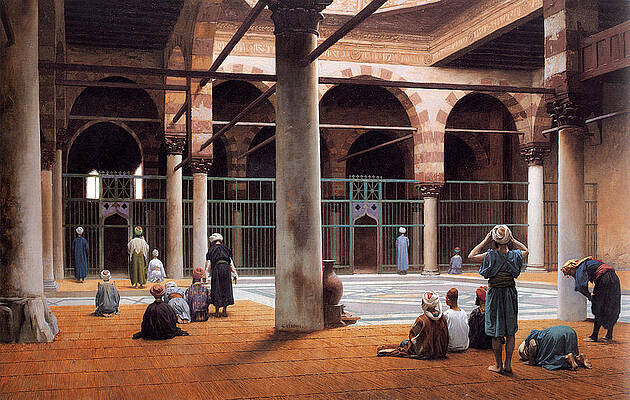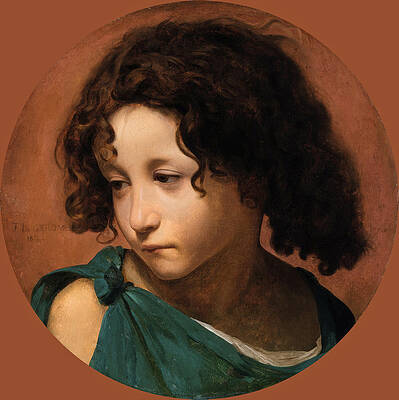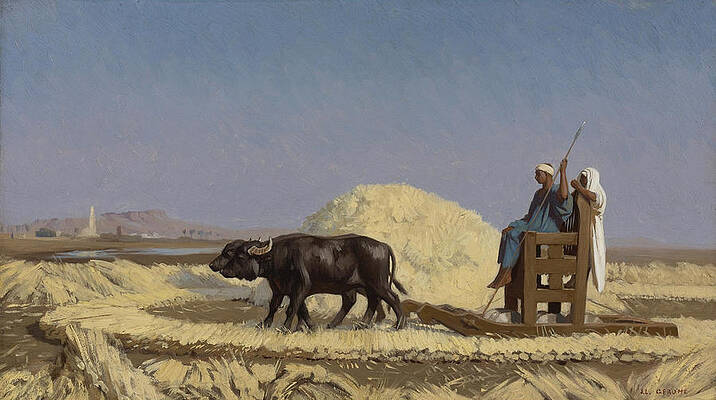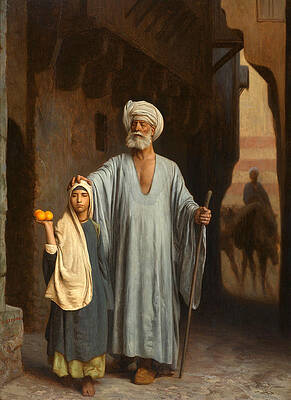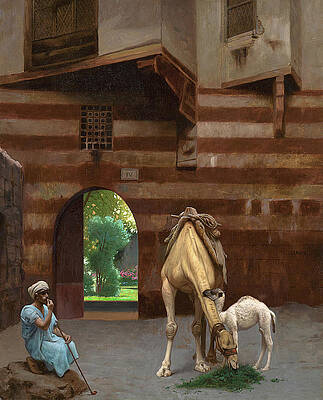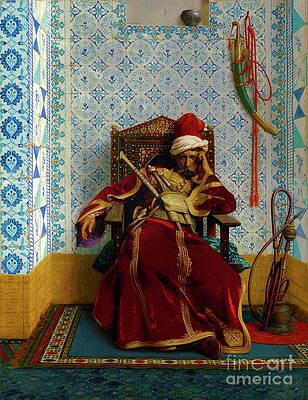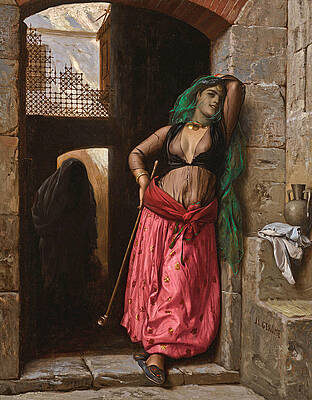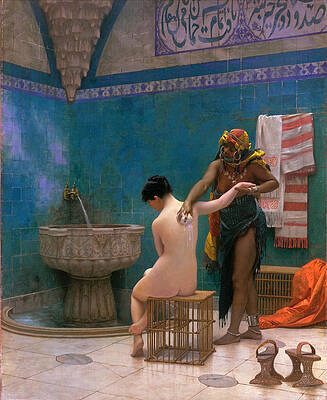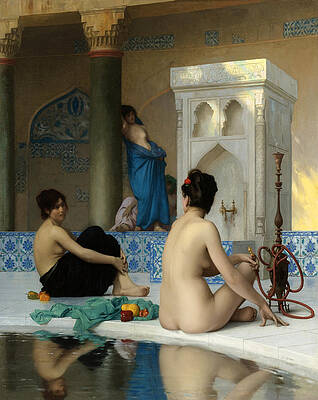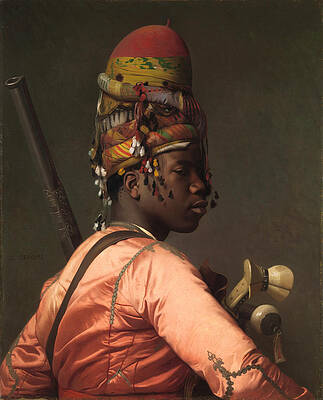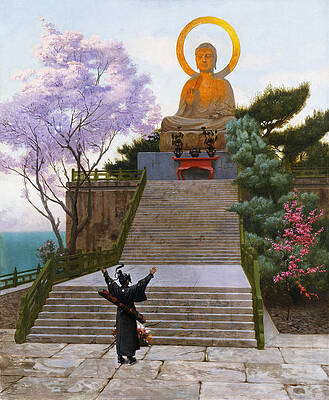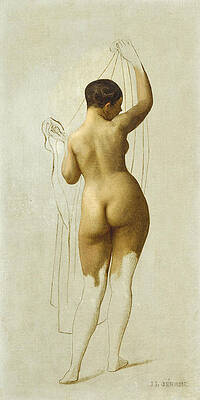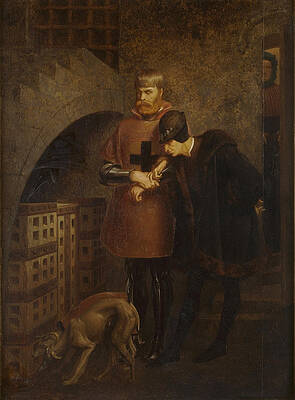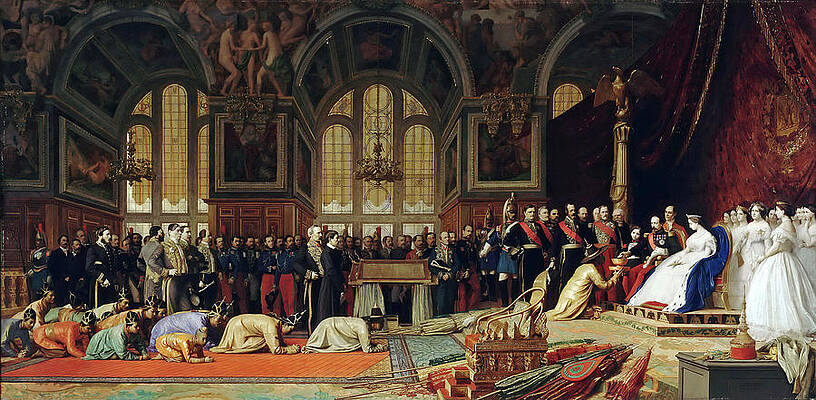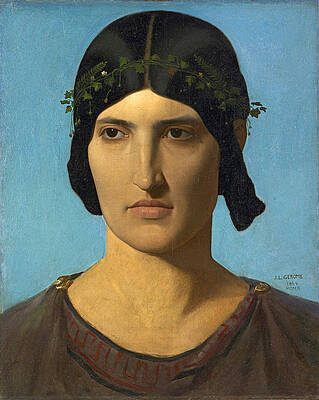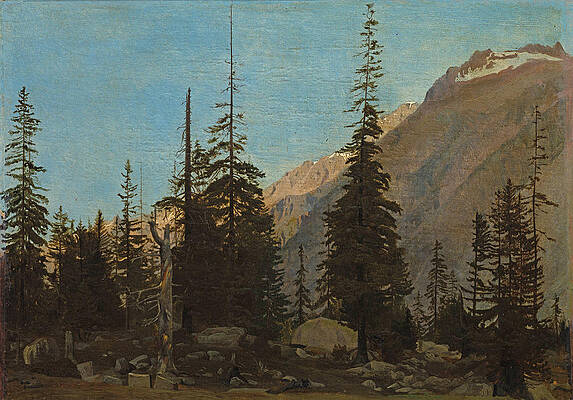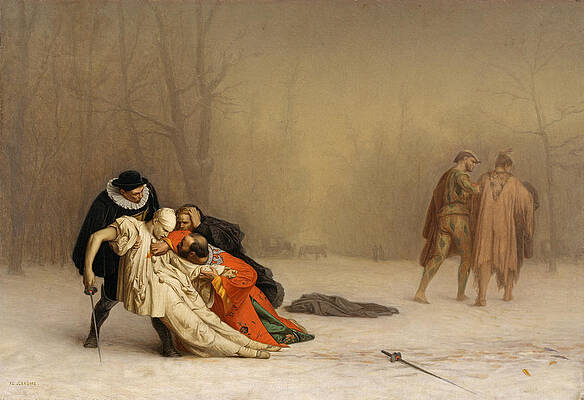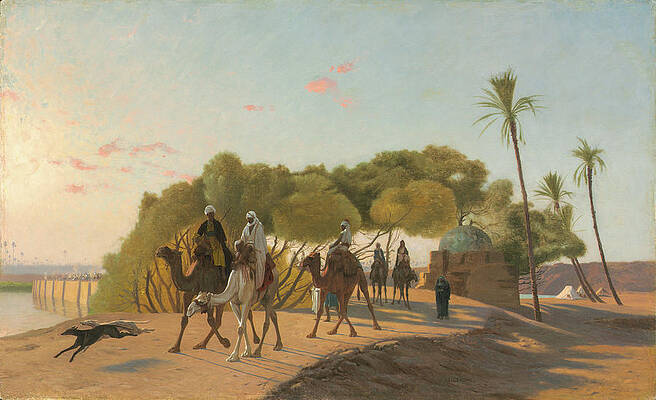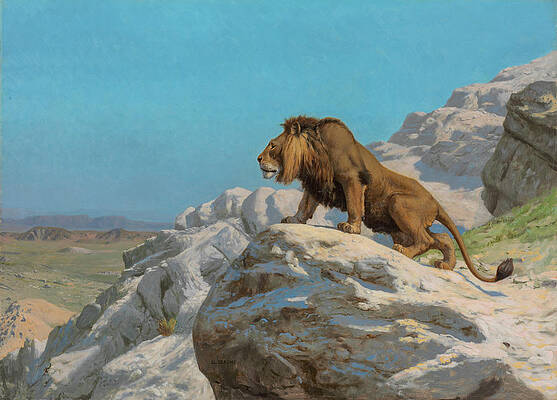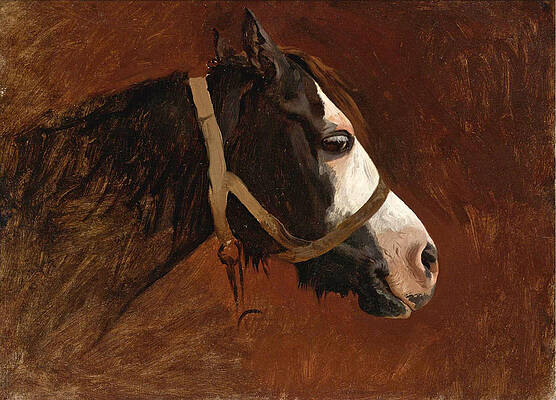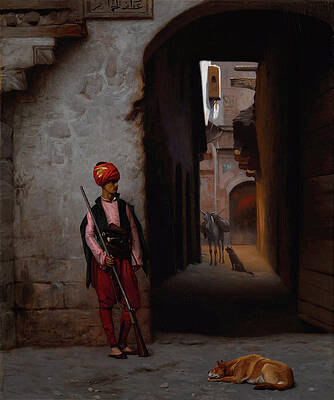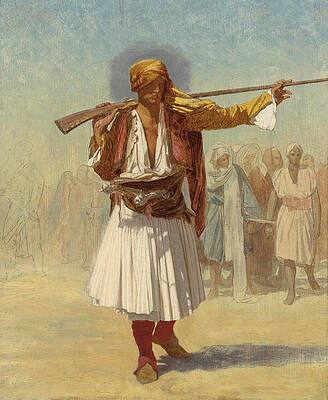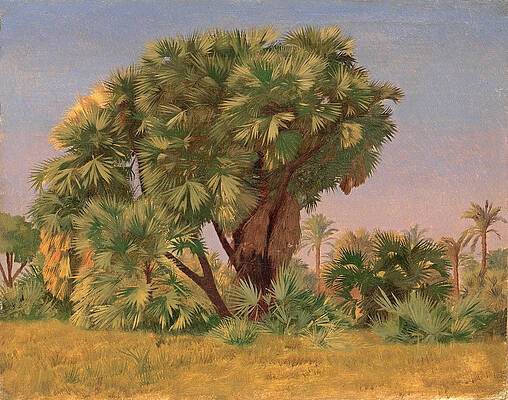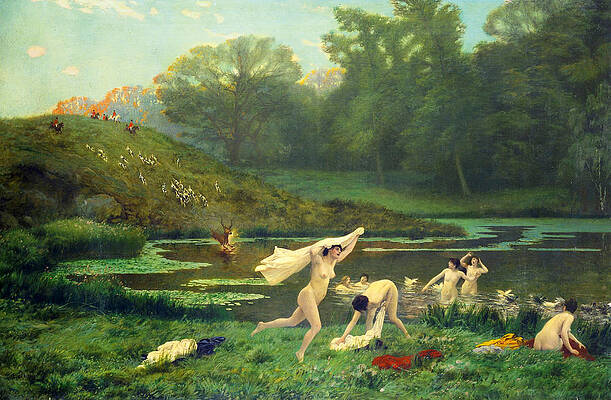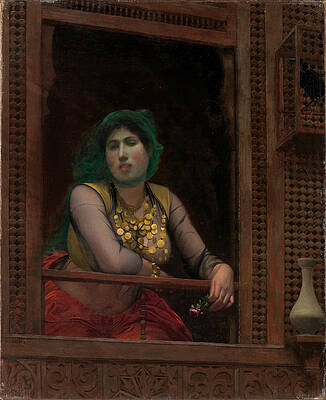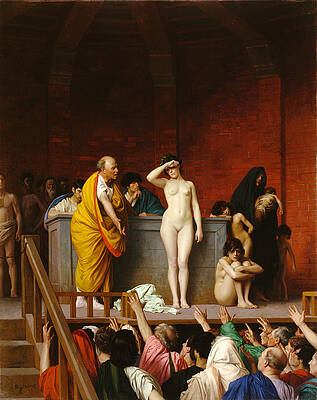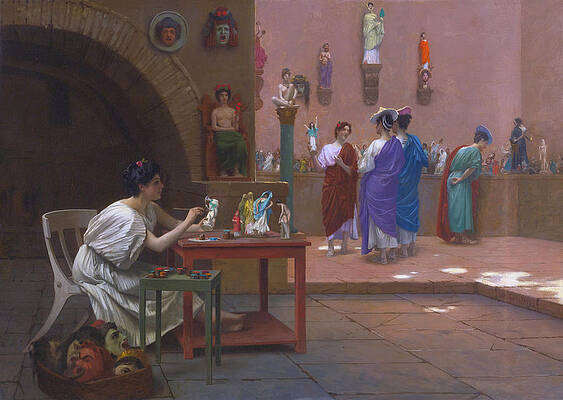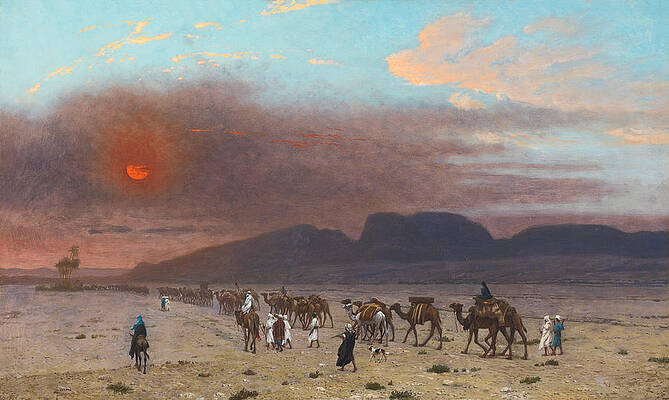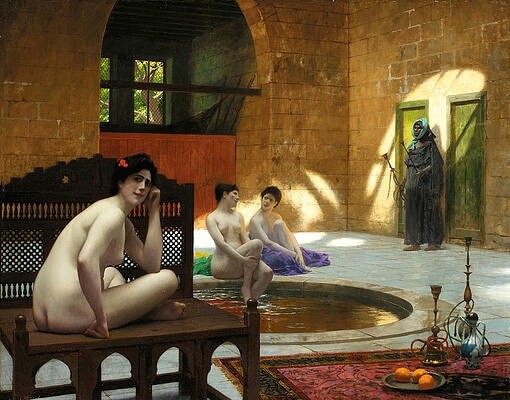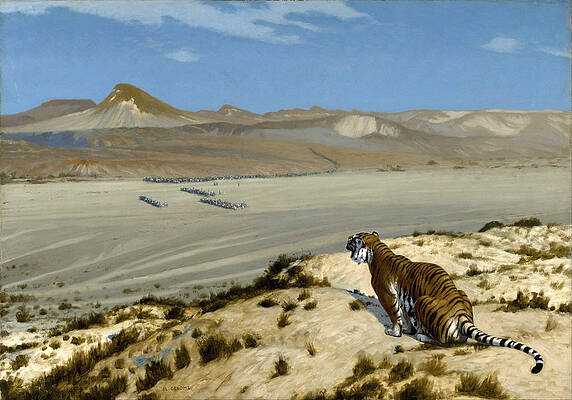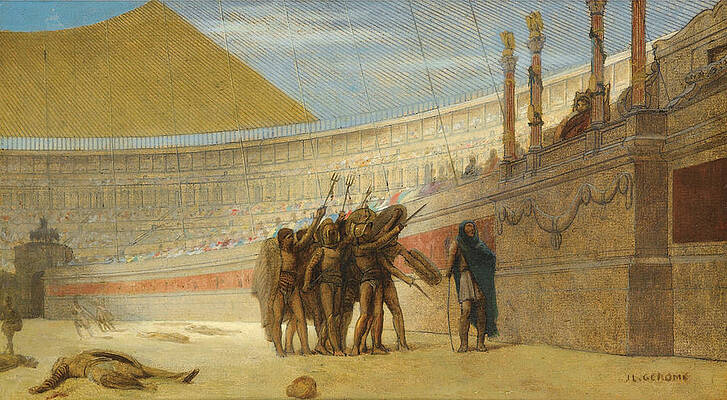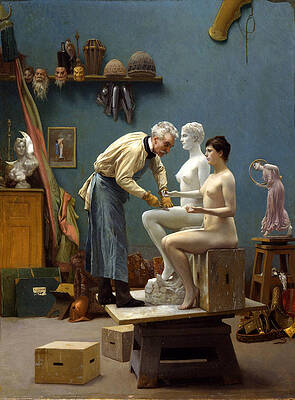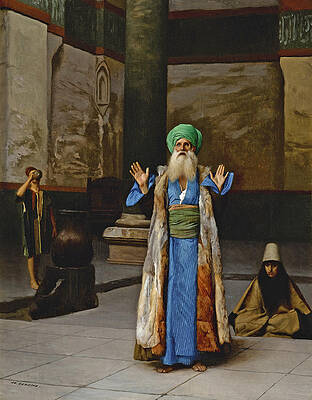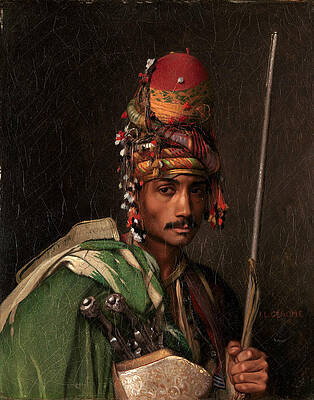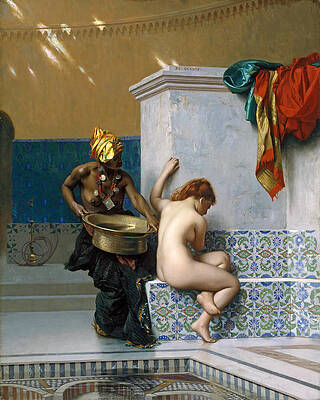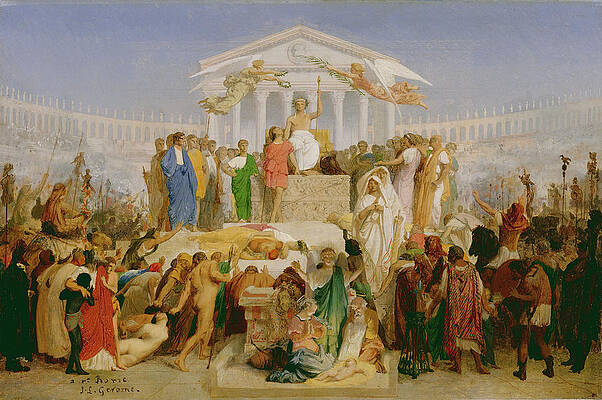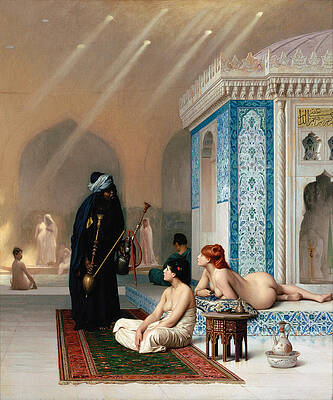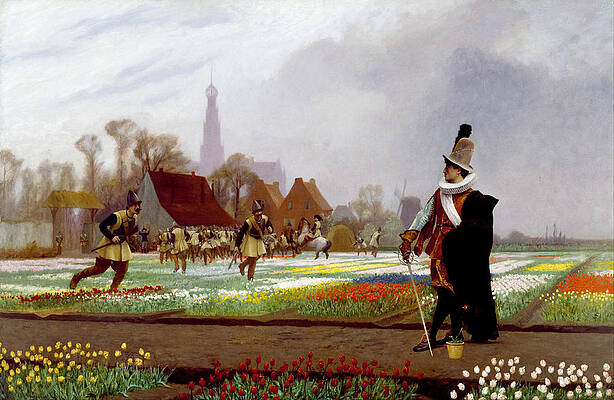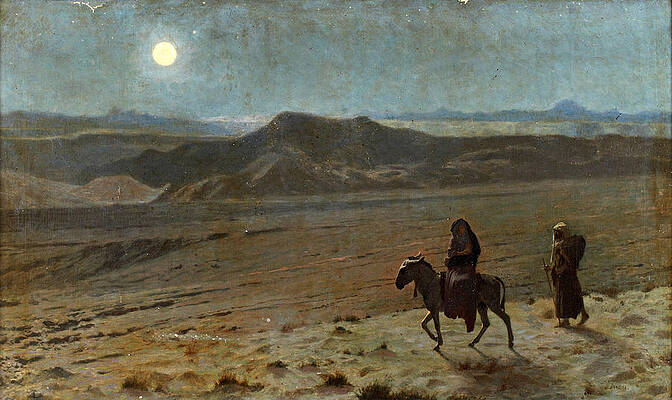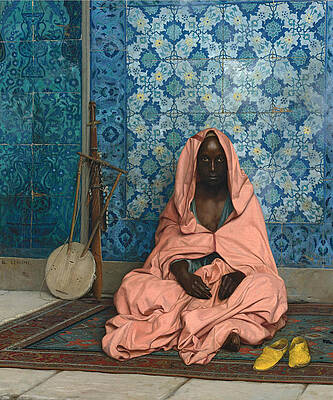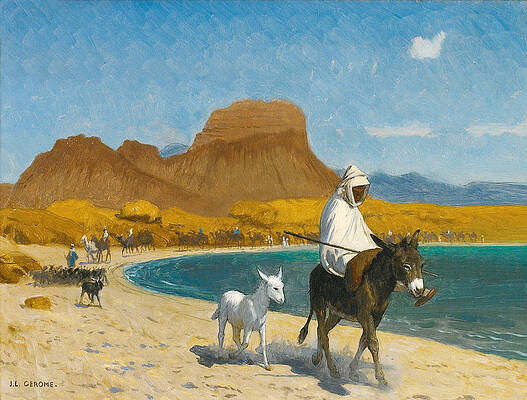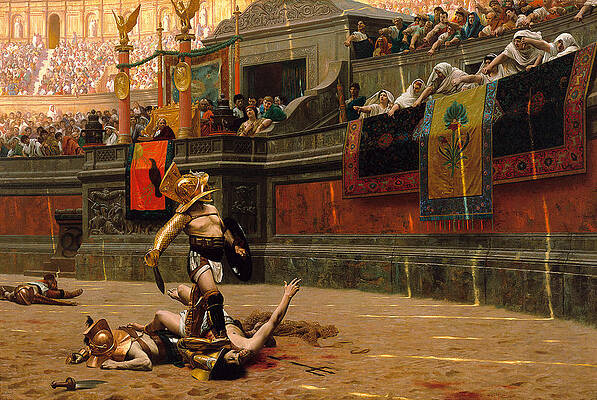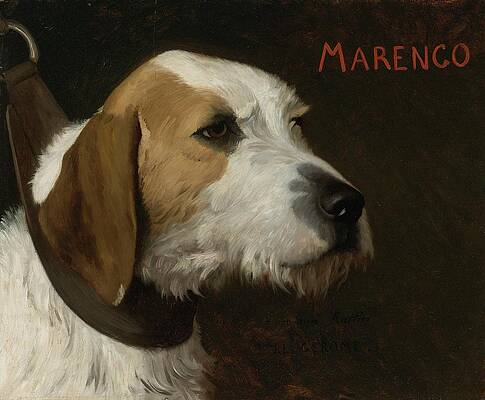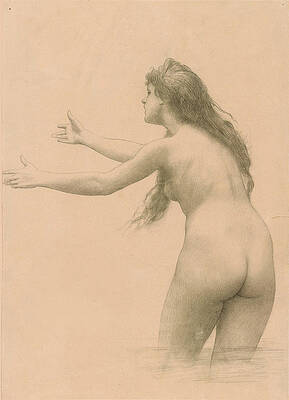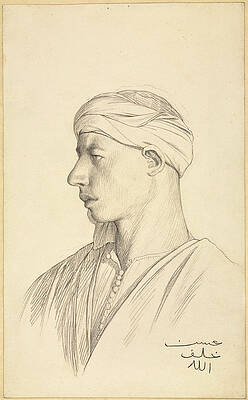Jean-Leon Gerome (original) (raw)
Jean-Léon Gérôme
Paintings
Pygmalion and Galatea
Pygmalion and Galatea 2
Polyphemus
The Carpet Merchant
The Wailing Wall
At Prayer. Cairo
The Colossus of Memnon
Women in Bath
Interior of a Mosque
Portrait of a Child
Le Tigre et Le Gardien
Dante. He Hath Seen Hell
Egyptian Grain-Cutters
The helping Hand
The Camel Driver
Markos Botsaris
Girl of Cairo
The Bath
After the Bath
After The Bath 2
Phryne before the Areopagus
Black Bashi-Bazouk
Japanese Emploring A Deity
Nude. Queen Rodophe
Allegory of Night
Tiger and Cubs
Prayer in the Mosque
Louis XI visiting the Cardinal La Balue
Slave in Cairo
The Reception of Siamese Ambassadors by Emperor Napoleon III at the Palace of Fontainebleau
Master of the Hounds
Head of an Italian Woman
View of Medinet El-Fayoum
Alpine Landscape, The Handegg, Switzerland
The Duel After the Masquerade
Leaving the Oasis
Lion on the Watch
The Runners of the Pasha
L'Attente
Profile of a Horse
The Guard
Woman of Constantinople
Arnaut Officer
A Bashi Bazouk and his Dog
Study of Palm Trees
Bather at the Brousse Pool
Diana And Actaeon
Leda and the Swan
Woman at a Balcony
Cafe House. Cairo. Casting Bullets
Street Vendor in Cairo
Slave Market in Rome
Two Italian Peasant Women and an Infant
Moses on Mount Sinai
Painting Breathes Life into Sculpture
Caravan in the Desert
Women in Bath
The Slave Market
Tiger on the Watch
Young Greeks Attending a Cock Fight
Diogenes
Bonaparte Before the Sphinx
Ave Caesar Morituri te salutant
Working in Marble. The Artist Sculpting Tanagra
A Sultan at Prayer
Bashi-Bazouk
Moorish Bath
The Arnaut with two Whippets
The Age of Augustus. The Birth of Christ
The Gulf of Aqaba
Pool in a Harem
The Tulip Folly
The final session
The Flight into Egypt
The Black Bard
Golfe d'Akaba
Cleopatra and Caesar
Bathsheba
Pollice Verso. With a turned thumb
Marengo
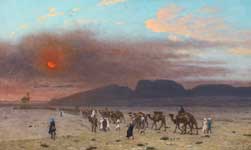
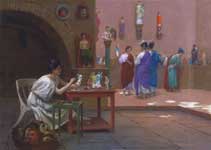
Painting Breathes Life into Sculpture
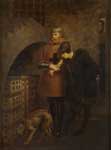
Louis XI visiting the Cardinal La Balue
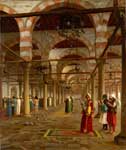
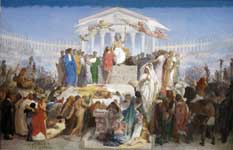
The Age of Augustus, the Birth of Christ
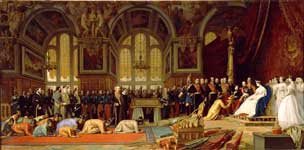
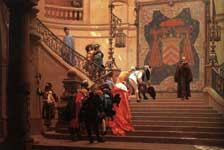
Grey Eminence, François Leclerc du Tremblay, the right-hand man of Cardinal Richelieu
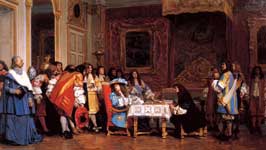
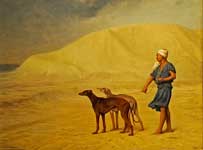
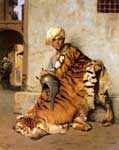
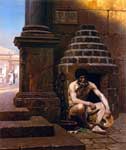
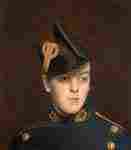
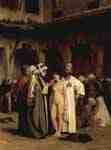
The Slave Market
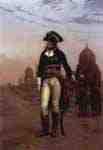
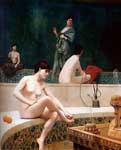
A Bath, Woman Bathing Her Feet
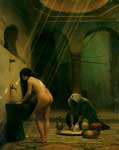
A Moorish Bath - Turkish Woman Bathing, No.2
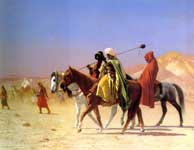
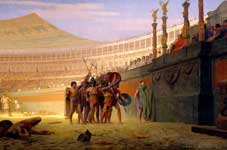
Ave Caesar Morituri te Salutant
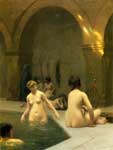
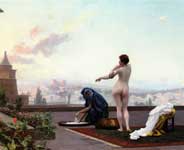
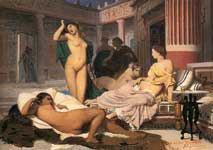
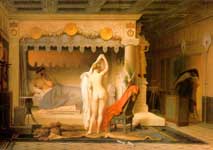
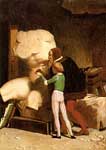
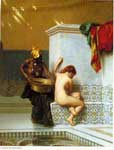
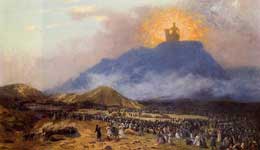
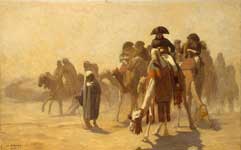

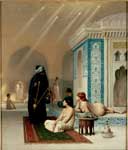
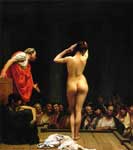
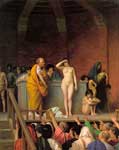
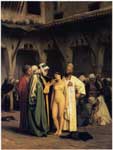
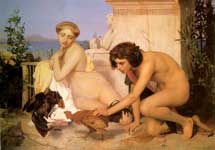
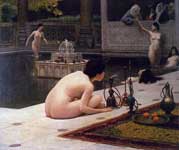
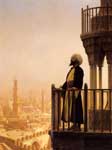
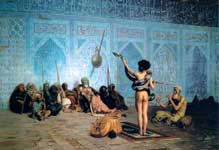
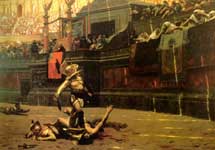
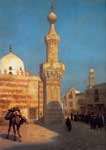
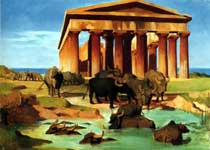
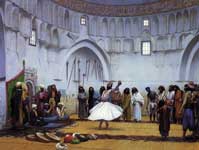
Leda
Julius Caesar
Assan, a Young Man
Portrait of an Egyptian Fellah
The Dead Caesar
Jean-Léon Gérôme (11 May 1824 – 10 January 1904) was a French painter and sculptor in the style now known as Academicism. The range of his oeuvre included historical painting, Greek mythology, Orientalism, portraits and other subjects, bringing the Academic painting tradition to an artistic climax. He is considered one of the most important painters from this academic period, and in addition to being a painter, he was also a teacher with a long list of students.
Biography
Early life
Birthplace of Jean-Léon Gérôme in Vesoul (France).
Jean-Léon Gérôme was born at Vesoul, Haute-Saône. He went to Paris in 1840 where he studied under Paul Delaroche, whom he accompanied to Italy (1843–44). He visited Florence, Rome, the Vatican and Pompeii, but he was more attracted to the world of nature. Taken by a fever, he was forced to return to Paris in 1844. On his return he followed, like many other students of Delaroche, into the atelier of Charles Gleyre and studied there for a brief time. He then attended the Ecole des Beaux-Arts. In 1846 he tried to enter the prestigious Prix de Rome, but failed in the final stage because his figure drawing was inadequate.
The Duel After the Masquerade (ca. 1857–59) depicts a duel after a costume ball in Bois de Boulogne, Paris.[1] The Walters Art Museum.
He tried to improve his skills by painting The Cockfight (1846), an academic exercise depicting a nude young man and a lightly draped young woman with two fighting cocks and in the background the Bay of Naples. He sent this painting to the Salon of 1847, where it gained him a third-class medal. This work was seen as the epitome of the Neo-Grec movement that had formed out of Gleyre's studio (such as Henri-Pierre Picou (1824–1895) and Jean-Louis Hamon), and was championed by the influential French critic Théophile Gautier.
Gérôme abandoned his dream of winning the Prix de Rome and took advantage of his sudden success. His paintings The Virgin, the Infant Jesus and St John (private collection) and Anacreon, Bacchus and Cupid (Musée des Augustins, Toulouse, France) took a second-class medal in 1848. In 1849, he produced the paintings Michelangelo (also called In his studio) (now in private collection) and A portrait of a Lady (Musée Ingres, Montauban).
In 1851, he decorated a vase, later offered by Emperor Napoleon III of France to Prince Albert, now part of the Royal Collection at St. James's Palace, London. He exhibited Bacchus and Love, Drunk, a Greek Interior and Souvenir d'Italie, in 1851; Paestum (1852); and An Idyll (1853).
Important commissions
In 1852, Gérôme received a commission by Alfred Emilien Comte de Nieuwerkerke, Surintendant des Beaux-Arts to the court of Napoleon III, for the painting of a large historical canvas, the Age of Augustus. In this canvas he combines the birth of Christ with conquered nations paying homage to Augustus. Thanks to a considerable down payment, he was able to travel in 1853 to Constantinople, together with the actor Edmond Got. This would be the first of several travels to the East: in 1854 he made another journey to Greece and Turkey[2] and the shores of the Danube, where he was present at a concert of Russian conscripts, making music under the threat of a lash.
In 1853, Gérôme moved to the Boîte à Thé, a group of studios in the Rue Notre-Dame-des-Champs, Paris. This would become a meeting place for other artists, writers and actors. George Sand entertained in the small theatre of the studio the great artists of her time such as the composers Hector Berlioz, Johannes Brahms and Gioachino Rossini and the novelists Théophile Gautier and Ivan Turgenev.
In 1854, he completed another important commission of decorating the Chapel of St. Jerome in the church of St. Séverin in Paris. His Last communion of St. Jerome in this chapel reflects the influence of the school of Ingres on his religious works.
To the exhibition of 1855 he contributed a Pifferaro, a Shepherd, A Russian Concert, and The Age of Augustus, the Birth of Christ. The last was somewhat confused in effect, but in recognition of its consummate rendering the State purchased it. However the modest painting, A Russian Concert (also called Recreation in the Camp) was more appreciated than his huge canvases.
Orientalism
The Cockfight (1846); now in the Musée d'Orsay, Paris
In 1856, he visited Egypt for the first time. This would herald the start of many orientalist paintings depicting Arab religion, genre scenes and North African landscapes.
The Tulip Folly (1882) represents "tulipomania" in the Netherlands. Soldiers were ordered to trample the flowerbeds in an effort to stabilize the market.[3] The Walters Art Museum.
Gérôme's reputation was greatly enhanced at the Salon of 1857 by a collection of works of a more popular kind: the Duel: after the Masked Ball (Musée Condé, Chantilly), Egyptian Recruits crossing the Desert, Memnon and Sesostris and Camels Watering, the drawing of which was criticized by Edmond About.
In 1858, he helped to decorate the Paris house of Prince Napoléon Joseph Charles Paul Bonaparte in the Pompeian style. The prince had bought his Greek Interior (1850), a depiction of a brothel also in the Pompeian manner.
In Caesar (1859) Gérôme tried to return to a more severe class of work, the painting of Classical subjects, but the picture failed to interest the public. Phryne before the Areopagus, King Candaules and Socrates finding Alcibiades in the House of Aspasia (1861) gave rise to some scandal by reason of the subjects selected by the painter, and brought down on him the bitter attacks of Paul de Saint-Victor and Maxime Du Camp. At the same Salon he exhibited the Egyptian Chopping Straw, and Rembrandt Biting an Etching, two very minutely finished works.
He married Marie Goupil (1842–1912), the daughter of the international art dealer Adolphe Goupil. They had four daughters and one son. Upon his marriage he moved to a house in the Rue de Bruxelles, close to the music hall Folies Bergère. He expanded it into a grand house with stables with a sculpture studio below and a painting studio on the top floor.
He started an independent atelier at his house in the Rue de Bruxelles between 1860 and 1862.
Honours
Gérôme was elected, on his fifth attempt, a member of the Institut de France in 1865. Already a knight in the Légion d'honneur, he was promoted to an officer in 1867. In 1869, he was elected an honorary member of the British Royal Academy. The King of Prussia Wilhelm I awarded him the Grand Order of the Red Eagle, Third Class. His fame had become such that he was invited, along with the most eminent French artists, to the opening of the Suez Canal in 1869.
He was appointed as one of the three professors at the Ecole des Beaux-Arts. He started with sixteen students, most who had come over from his own studio. His influence became extensive and he was a regular guest of Empress Eugénie at the Imperial Court in Compiègne.
The theme of his Death of Caesar (1867) was repeated in his historical canvas Death of Marshall Ney, that was exhibited at the Salon of 1867, despite official pressure to withdraw it as it raised painful memories.
Gérôme returned successfully to the Salon in 1873 with his painting L'Eminence Grise (Museum of Fine Arts, Boston), a colorful depiction of the main stair hall of the palace of Cardinal Richelieu, popularly known as the Red Cardinal (L'Eminence Rouge), who was France's de facto ruler under King Louis XIII beginning in 1624. In the painting, François Le Clerc du Trembly, a Capuchin friar dubbed L'Eminence Grise (the Gray Cardinal), descends the ceremonial staircase immersed in the Bible while subjects either bow before him or fix their gaze on him. As Richelieu's chief adviser, L'Eminence Grise was called "the power behind the throne," which became the known definition of his title.[4]
When he started to protest and show a public hostility to "decadent fashion" of Impressionism, his influence started to wane and he became unfashionable. But after the exhibition of Manet in the Ecole in 1884, he eventually admitted that "it was not so bad as I thought."
In 1896 Gérôme painted Truth Rising from her Well, an attempt to describe the transparency of an illusion. He therefore welcomed the rise of photography as an alternative to his photographic painting. In 1902, he said "Thanks to photography, Truth has at last left her well."
Death
Jean-Léon Gérôme died in his atelier on 10 January 1904. He was found in front of a portrait of Rembrandt and close to his own painting "The Truth". At his own request, he was given a simple burial service without flowers. But the Requiem Mass given in his memory was attended by a former president of the Republic, most prominent politicians, and many painters and writers. He was buried in the Montmartre Cemetery in front of the statue Sorrow that he had cast for his son Jean who had died in 1891.
He was the father-in-law of the painter Aimé Morot.
Sculpture
Tanagra, 1890
Gérôme was also successful as a sculptor. His first work was a large bronze statue of a gladiator holding his foot on his victim, shown to the public at the Exposition Universelle of 1878. This bronze was based on the main theme of his painting Pollice verso (1872). The same year he exhibited a marble statue at the Salon of 1878, based on his early painting Anacreon, Bacchus and Cupid (1848).
The Death of Caesar (1867), (Walters Art Museum), depicts the assassination in the Theatre of Pompey on the Ides of March.
Aware of contemporary experiments of tinting marble (such as by John Gibson) he produced Dancer with Three Masks (Musée des Beaux-Arts, Caen ), combining movement with colour (exhibited in 1902). His tinted group Pygmalion and Galatea provided his inspiration for several paintings in which he depicted himself as the sculptor who could turn marble into flesh; one example is Pygmalion and Galatea (1890) (Metropolitan Museum, New York).
Among his other works are Omphale (1887), and the statue of the duc d'Aumale which stands in front of the château of Chantilly (1899).
He started experimenting with mixed ingredients, using for his statues tinted marble, bronze and ivory, inlaid with precious stones and paste. His Dancer was exhibited in 1891. His lifesize statue Bellona (1892), in ivory, bronze, and gemstones, attracted great attention at the exhibition in the Royal Academy of London.
The artist then began a series of Conquerors, wrought in gold, silver and gems: Bonaparte entering Cairo (1897); Tamerlane (1898); and Frederick the Great (1899).
Gallery
Among Gérôme's notable paintings may be named (many depict Eastern subjects) :
Turkish Prisoner (1861)
Turkish Butcher Boy in Jerusalem (1862)
Louis XIV and Molière (1863)
The Reception of the Siamese Ambassadors at Fontainebleau (1865)
Prayer (1865)
Death of Marshal Ney (1867)
Jerusalem, also called Golgotha, Consumatum Est or The Crucifixion (1867)
The Slave Market (1867)
Excursion of the Harem (1869)
L'Eminence Grise (1873)[5]
Arnaut and his dog
The Snake Charmer (1880)
References and sources
References
"The Duel After the Masquerade". The Walters Art Museum.
Rosenthal, Donald A. 1982. Orientalism, the Near East in French painting, 1800-1880. Rochester, N.Y.: Memorial Art Gallery of the University of Rochester. p. 77. ISBN 0918098149
"The Tulip Folly". The Walters Art Museum.
Museum of Fine Arts, Boston: L'Eminence Grise
"Museum of Fine Arts, Boston: ''L'Eminence Grise''". Mfa.org. Retrieved February 2014.
Sources
Ackerman, Gerald (1986). The life and work of Jean-Léon Gérôme; catalogue raisonné. Sotheby's Publications. ISBN 0-85667-311-0.
Ackerman, Gerald (2000). Jean-Léon Gérôme. Monographie révisée, catalogie raisonné mis a jour. ACR. ISBN 2-86770-137-6.
Benezit E. - Dictionnaire des Peintres, Sculpteurs, Dessinateurs et Graveurs - Librairie Gründ, Paris, 1976; ISBN 2-7000-0156-7 (in French)
Laurence des Cars, Dominque de Font-Rélaux and Édouard Papet (ed.), The Spectacular Art of Jean-Léon Gérôme, (1824–1904), Paris: SKIRA, 2010
Scott C. Allan and Mary Morton (ed.), Reconsidering Gérôme, Los Angeles: J. Paul Getty Museum, 2010, in: Art Bulletin 94 (2012), No. 2, pp. 312–316
Turner, J. - Grove Dictionary of Art - Oxford University Press, USA; new edition (January 2, 1996); ISBN 0-19-517068-7
Catalogue of the exhibition in the Musée de Vésoul (August 1981). Jean-Léon Gérôme : peintre, sculpteur et graveur; ses oeuvres conservées dans les collections françaises et privées. Ville de Vésoul.
Attribution
This article incorporates text from a publication now in the public domain: Chisholm, Hugh, ed. (1911). "Gérôme, Jean Léon". Encyclopædia Britannica (11th ed.). Cambridge University Press.
Artist
A - B - C - D - E - F - G - H - I - J - K - L - M - N - O - P - Q - R - S - T - U - V - W - X - Y - Z
Retrieved from "http://en.wikipedia.org/"
All text is available under the terms of the GNU Free Documentation License

